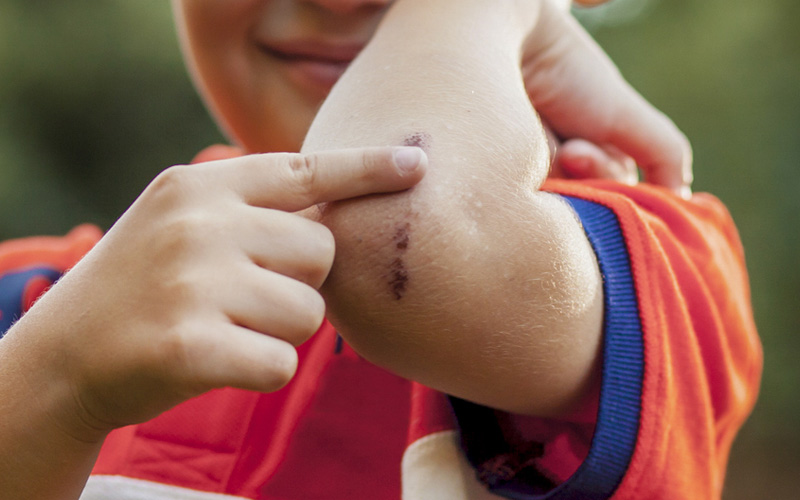
The human body has a pretty ingenious way of protecting itself from excessive blood loss. Yes, you guessed it: Scabs.
But don’t be fooled: Scabs are a whole lot more than dried blood. In fact, there’s a whole fascinating structure to how scabs form.
It all starts with platelets, which are irregularly-shaped, colorless bodies in the blood. When bleeding from a wound suddenly occurs, the platelets gather at the wound and attempt to block the blood flow. Calcium, vitamin K, and a protein called fibrinogen help the platelets form a clot.
When the platelets sense the presence of air, they begin to break apart. They react with the fibrinogen to form fibrin, which resembles tiny threads. The fibrin threads then begin to form a web-like mesh that traps the blood cells within it. This mesh of blood cells hardens as it dries, forming a clot, or "scab" on the surface of the skin.
Blood clots may form under the skin as well, in the form of black-and-blue marks or bruises.
The important thing to remember is that scabs and bruises are indicators of healing.